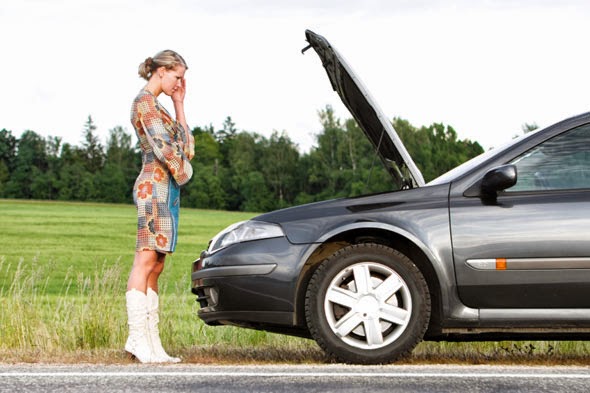
A regular day starts off great, you get into your car, try to start the engine and nothing happens. You give it a second try, still nothing. You start panicking, you think what could possibly cause the car not to work and no ideas come to your head. Many people find themselves in this situation, so it’s not uncommon. You simply have to follow a few steps that will result in your car working again. It might be more difficult when your car breaks down in the middle of the road, but this article will serve as a short guide containing all the steps you should follow in this sense.
In case you are on the road
Moving the car
If you start noticing that your vehicle is not acting right, you should pull off the road as fast as you can. This is not possible in all cases immediately after you notice something’s wrong, so the alternative is to turn on your hazard lights and drive slowly until you can safely pull off the road. Staying in the middle of the road is not a solution unless the situation is so severe that you need to leave the vehicle as fast as possible. Leaving the car and diagnosing its problems in the middle of the road will lead to a traffic jam. In case the car doesn’t function, ask other traffic participants to help you move it away from the road.
- Assessing the damage
After you managed to move the car, you need to assess if any damage is present and figure out what’s wrong with the vehicle. Since you’re on the road, the equipment you may have in the car may not be enough to fix potential damage. You can only engage in fixing the problem if you know exactly how to do it and if you are informed about that problem. While you are checking the vehicle for possible damage, ensure your own safety and the vehicle’s safety.
First, turn off the engine and carefully leave the car. Getting out of the vehicle must be done in a precautious way since traffic may be intense. Checking the oncoming cars and leaving the vehicle must be done carefully. Sitting in a position where drivers can hit you is to be avoided at all costs. To make the car more visible for other traffic participants, make sure to turn on emergency lights and wear a light jacket.
- Calling for help
If you can’t figure out what’s wrong with your car and there’s no modality in which you can fix it, it’s time to call for help. You can either call 911, in case the situation is dangerous for you or for other traffic participants or you can call roadside assistance services, in case no immediate threat is present. Calling both services is advised, to report the incident to the police and have your vehicle towed as well. When contacting roadside assistance, you might need to provide specific information about the problem encountered, the insurance details and other details that might be relevant for the towing team such as the number of people that were in the car.
- Know your responsibilities
When your vehicle breaks down in traffic, there are some responsibilities that you need to respect. Insurance policies don’t cover every cost of the reparation and the situation may differ. The circumstances can be influenced by many factors, so it’s best to make sure that you know your rights and responsibilities when such an event occurs. Your responsibilities are not obstructing the traffic in that area, carrying the necessary items to signal the event during nighttime and other items that could be used in the reparation process, such as the ones required for changing a tire. The engine shouldn’t be running during fixing the car or diagnosing it and the authorities should be notified about the situation.
In case you are at home
If your car doesn’t start, even though you used it a day before and parked it into the garage, the possible issues can be narrowed down to a shorter list. Of course, there are many possibilities even in this case. The steps you need to follow are:
- Buying an onboard diagnostics scanner
Onboard diagnostics scanner can help you find out what’s wrong with your car in seconds. These scanners are mostly based on the onboard computer of your vehicle, meaning that they can read complex codes that the computer uses and clean it of any present errors. The scanner is capable of listing logged data that a specialist can see for further diagnosing. There are other OBD scanners that allow advanced scanning, which usually includes other information. Once you buy it, read your OBD2 scanner guide and see what is capable of and how it can be used.
- Listening to the sound that the engine makes
In most situations, the sound that your car’s engine makes can tell you a lot about the vehicle’s state. Immediately after you turn the keys or you press the start button, listen to the sounds that the engine makes. A clicking sound is an ultimate sign that your car doesn’t receive the power needed. This means that you need to investigate further and check the battery. In many cases, the battery is the problem that keeps the car from functioning and is the easiest problem to solve.
- Checking the battery
When proceeding to check the battery, make sure that the engine is stopped. Carefully open the hood and notice the battery and its connections. The terminals should be clean and connected correctly. If the battery terminals seem to be corroded, you should clean them with a specially-purposed brush. The cables should be tight and in good condition. If you find out that the battery is dead, you need to jump start it and see if this is the problem that causes the vehicle not to work.
